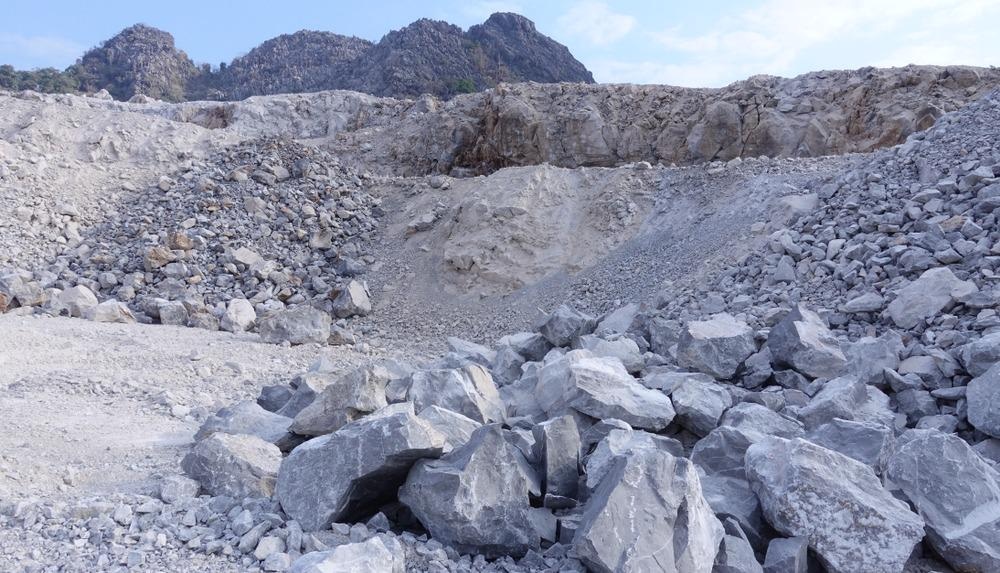
Image Credit: Parmna/Shutterstock.com
A California-based cleantech pioneer – Blue Planet Ltd. – is learning from nature to make concrete more sustainable with biomimetic carbon capture. The company’s economically sustainable carbon capture process creates a limestone rock substitute that can replace aggregate for concrete, significantly reducing the material’s ultimate environmental impact.
Limestone Rock Substitute for Greener Concrete
As populations and economies grow worldwide, more buildings and infrastructure projects are being undertaken each year. This growth has serious consequences for the environment and, in the face of impending climate catastrophe, means to reduce this impact are a top priority.
Among the most harmful elements of this continual worldwide development is the widespread use of concrete as a building material. Concrete’s environmental consequences are well documented and come from a variety of factors. Among these is the need for large amounts of rock material for aggregate – which is environmentally costly to mine, transport, and implement.
Blue Planet’s biomimetic carbon capture process creates a limestone rock substitute that can replace natural limestone rock mined from quarries (the principal ingredient in concrete).
By utilizing a carbon mineralization process – similar to natural ooid formation – Blue Planet produces coarse and fine aggregate material from sequestered CO2. The company claims that using this aggregate is the most effective way to deliver carbon-neutral or carbon-negative concrete.
Importantly, the limestone rock substitute that Blue Planet produces is equivalent to mined limestone in terms of strength, performance, and cost.
Biomimetic Carbon Capture: Learning from Nature
The Blue Planet process for carbon capture is similar to natural ooid rock formation. Ooids are formed as layers gather around a nucleus in concentric layers. These crystalline layers can be arranged radially, tangentially, or randomly around the nucleus, which is typically a shell fragment or quartz grain.
Mimicking this natural ooid formation, Blue Planet introduces CO2 captured from flue gas to a water-based capture solution. This process results in a carbonate solution that is coated over a nucleus or substrate. The coating is described as synthetic limestone (CaCO3).
The carbonate mineral coating is made up of 44% captured CO2 so that each ton of the final Blue Planet product represents 440 kilograms of carbon dioxide sequestered from the atmosphere.
The captured CO2 coating is then exposed to recycled aggregate material which contains sufficient alkalinity. Common rock waste or industrial waste materials are recycled for this purpose to further increase the positive environmental impact of the final material.
When the carbonate solution is exposed to the alkaline aggregate substrate, metal ions present in the aggregate, such as calcium, magnesium, and iron, are recharged. This reaction causes the metal ions to release and combine with the carbonate solution to form a mineral coating – similarly to how ooid rocks form.
Because there is no purification step required for Blue Planet’s biomimetic carbon capture – as opposed to other carbon sequestration methods – it performs carbon sequestration more efficiently. Purification is both an energy and capital-intensive process, so removing this step results in a more economically sustainable carbon capture that also uses significantly less energy.
Creating concrete aggregate from thin air: Introducing Blue Planet
Video Credit: Healthy Climate Alliance/YouTube.com
Applications for Blue Planet’s Limestone Rock Substitute
The economically sustainable carbon capture product described here replaces natural limestone rock that must be mined from quarries to meet the world’s ever-growing demand for concrete.
Blue Planet plants can produce aggregates at varying sizes from fine, sand-like material to coarse gravels. Furthermore, these aggregates trap atmospheric carbon within their carbonate coating, preventing it from entering the atmosphere or hydrosphere.
Already, development projects are making use of this material to ensure more sustainable outcomes without compromising on performance or cost. For example, San Francisco International Airport in California recently employed Blue Planet’s limestone rock substitute to complete a major development project with built-in, economically sustainable carbon capture. This significantly reduced the overall carbon footprint of the project.
Carbon sequestration technologies such as this are an important part of our collective effort to reduce the number of harmful CO2 in the atmosphere and hydrosphere. By working to develop an economically sustainable carbon capture process, Blue Planet is contributing to the global challenge of CO2 reduction in a significant way.
References and Further Reading
“Economically Sustainable Carbon Capture.” Blue Planet. [Online] http://www.blueplanet-ltd.com/.
Matter, Juerg, M. et al. (2016). “Rapid Carbon Mineralization for Permanent Disposal of Anthropogenic Carbon Dioxide Emissions.” Science. [Online] https://doi.org/10.1126/science.aad8132.
Russo, M.E., Olivieri, G., Salatino, P. and A. Marzocchella (2013). “CO2 Capture by Biomimetic Adsorption: Enzyme Mediated CO2 Absorption for Post-combustion Carbon Sequestration and Storage Process.” Environmental Engineering and Management Journal. [Online] https://research.wur.nl/en/publications/co2-capture-by-biomimetic-adsorption-enzyme-mediated-co2-absorpti.
Wang, Yin, Shiying Lin and Yoshizo Suzuki (2007). “Study of Limestone Calcination with CO2 Capture: Decomposition Behavior in a CO2 Atmosphere.” Energy Fuels. [Online] https://doi.org/10.1021/ef700318c.
Disclaimer: The views expressed here are those of the author expressed in their private capacity and do not necessarily represent the views of AZoM.com Limited T/A AZoNetwork the owner and operator of this website. This disclaimer forms part of the Terms and conditions of use of this website.